Enough people have asked me if it’s viable to overclock the Intel i9-10900K with air cooling that I’ve decided to cover my experience of successfully running an all-core 5GHz overclock with the Noctua NH-D15S air cooler.
The short answer is “Yes, provided that you use a decent cooler and it will also depend on the workloads that you do.”
First, a note about the i9-10900K
When running the Intel i9-10900K at stock settings, it isn’t a scorching hot CPU at 125W so decent air cooling will suffice. The thing is that most Z490 motherboards will have Multi-Core Enhancement or other ‘Vendor Magic’ to boost the performance further. Our ASUS Maximus XII Extreme even has AI Overclocking where the board evaluates the CPU and cooling metrics to do the hard work for us. Running the CPU outside of the Intel ‘stock specification’ will result in a dramatic increase in terms of power draw and operating temperature.
For my prior review testing, I used a 360mm Thermaltake Floe AIO water cooler and the results were good. At stock or even with BIOS enhancements enabled, the 10900K didn’t get past 68°C with the 360mm AIO cooler – nor should it.
It is important to note that the experience I’m about to cover is when running the i9-10900K with a constant all-core overclock of 5GHz without any power limits or turbo boost durations in effect to pull it back. You won’t see these temperatures unless you’re overclocking.
AIO Water Cooling vs Traditional
Water cooling is more popular than ever with AIO coolers flooding the market but there are still people that want to stick to the traditional method of air cooling. An All-in-One (AIO) water cooler is a sealed pre-filled unit that includes a radiator, waterblock, pump and fans – designed for easy installation.
A traditional air cooler involves a CPU contact plate, some heat pipes, a fin stack and a fan (or two) to pass air over the fins and effect the energy exchange.
A traditional air cooler involves a CPU contact plate, some heat pipes, a fin stack and a fan (or two) to pass air over the fins and effect the energy exchange.
Both CPU cooling methods have their benefits and disadvantages and, unfortunately, like so many other topics in enthusiast technology, their fanboys. To be clear, I’m not promoting one method of cooling over the other here.
Let’s do a high level overview of the pros and cons of AIO water and Water coolers. Custom loop solutions are in a different class of their own with higher flexibility, price and scale. High-end air cooling refers to the premium solutions
| High-end air Cooling | AIO Water Cooling | |
|---|---|---|
| Pros | -Typically more reliable due to less moving parts -There is no water to leak out -Usually have a lower noise profile -Slightly cheaper -Quicker to install overall (no hoses or radiator to manage) -Light cleaning is just a matter of removing the fan and blowing out the dust. | -Often more efficient heat transfer resulting in better temperatures than air coolers. -Radiator fans can double as case intake or exhaust fans -The motherboard headers, memory and graphics card are much more accessible when working around an AIO water block/pump unit. -Aesthetically appealing, many units have RGB and custom readouts on the pump/water block. -can be more survivable in transit due to a lighter weight mounted on the CPU socket area. |
| Cons | -Heavier weight on the motherboard -Bulky and can block -the PCIE 16x slot on the motherboard -Access to memory, fan headers and CPU power connectors -Requires a separate case intake and exhaust fan for best results -Aesthetically a larger heatsink and fan will cover the motherboard and is less attractive than a neat water block/pump. | -Pump noise in some models -Hoses can get in the way in some PC cases -Typically need a 240mm radiator as a minimum for effective overclocking cooling -roof mounted 240mm radiators can sometimes block tall memory modules depending on the selected case - even with an offset mounting feature -Rare reports of leaking -Some radiator fin designs trap dust and be harder to clean. |
I use both cooling solutions equally, but I’ll acknowledge a slight bias to the Noctua NH-D15S as it’s very quiet, simple to install and there is something elegant about only having one moving part. On our test bench, I’ve been using a 360mm Thermaltake Riing Floe 360 AIO water cooler as it allows more of the motherboard to be visible in the photos, the thermal performance is good and it makes changing CPUs memory or graphics cards a bit easier. For a personal rig though, I could go either way and it would depend on the PC case I was using.
Case in point – real-world scenario of an i9-10900K overclocked to 5GHz in a large Thermaltake View 71 chassis. There was a preference for quiet and stealth but without sacrificing performance and I wasn’t going to consider a custom water loop. This scenario is an ‘assembly’ job that anyone should be able to do.
Test System Specifications
ASUS ROG Intel Test Platform
- i9-10900K Overclocked to 5GHz on all cores
- ASUS Z490 MAXIMUS XII EXTREME
- HyperX Predator RGB DDR4-2933 (2x8GB)
- ASUS ROG STRIX 2080 Ti OC
- Noctua NT-H1 thermal compound
- Samsung EVO 970- M.2 SSD
- Samsung EVO 250GB 2.5” SATA SSD
- Western Digital 6TB Red HDD
- ASUS TUF K5 Keyboard
- Razer Deathadder Chroma RGB Mouse
- ASUS ROG Scabbard Deskpad
- Logitech Z533 speakers
- Windows Professional
- Air Cooled Setup
- Thermaltake View 71 Case
- Noctua NH-D15S with additional NF-A15 fan
- Corsair RM850X PSU
- AIO setup
- Thermaltake Core P3 Curved Chassis
- Thermaltake Floe 360mm AIO water cooler
- ASUS ROG THOR 1200W Platinum PSU
Testing
The Intel i9-10900K is rated at 125W under Intel stock limits and specification but when you take these away and overclock, a sustained Blender workload can push this past 225W at 5GHz across all cores. That power consumption will vary significantly depending on the workload but sustained 100% usage from rendering or transcoding tasks will hit the CPU hard. Gaming is a lot more inconsistent and far less demanding which will result in much lower power draw and thermals.
The AIO Benchmark
Overclocking to an all-core OC of 5GHZ with our Thermaltake Core P3 case and Floe 360 AIO cooler saw thermals in the upper 80’s to a peak of 89°C when doing 45-minute or longer Blender runs and extended Handbrake tasks. These are processes that really hammer a CPU – regardless of its class.
Gaming workloads were less intensive over extended periods and although thermals peaked in the high 70’s, even the games optimised for multi-core computing rarely pushed the i9-10900K past a typical average of 68°C with the AIO cooler.
Switching to an Air-Cooled real-world setup
About 3 months ago, I swapped the ASUS Maximus XII EXTREME test system from the open-air chassis to a Thermaltake View 71 case and used a Noctua NH-D15S cooler with an extra fan to see how it went. The test bench was otherwise the same. I tested with the top and side panels both on and off but found the results to be within margin for error. I’ve used the results with the side panels on as these reflect what real-world use would be like. I continued to use HWiNFO64 for monitoring.
In terms of gaming workloads, the i9-10900K performs well with a 5GHz all-core overclock. As an example, I reset the monitoring values after 30 mins of idle and gamed with Call of Duty Warzone for about 2 hours. The package temperature peaked at 82°C but averaged 71°C. The individual core temperatures peaked between 67°C and 77°C with an average of 56°C. There was no thermal throttling evident and the fan noise was significantly lower than when using the Thermaltake Floe 360 AIO. The fan noise was audible from 1 metre away but was by no means loud or distracting.
Keeping the Overclock of 5GHz across all cores I moved on to the rendering/transcoding workloads. Blender and Handbrake pushed the friendship further with sustained load of 45-mins to an hour seeing peak package temperatures of 93°C and typical operating package temps of 89-91°C which was a little warm for my liking. The ambient room temperature was 22°C so in summer where the temperature can get warmer than 22°C, I’d expect to see some throttling. Of course, I could also just back off the overclock to 4.9GHz and shave another 5°C on those peak temperatures when transcoding or rendering.
Final Thoughts
At the end of the day, the Noctua NH-D15S with 2 fans operating on a ‘standard’ fan curve will handle an overclocked Intel i9-10900K under all but the most ambitious overclocks. Water cooling and AIO units have a pump and usually 2-3 120mm fans which make more noise than something like a Noctua NF-A15 fan. Also keep in mind that Noctua now have a Chromax line with black hardware which I’m told performs the same as the original model I’ve used. The 360mm AIO was expected to perform better than the NH-D15S, and it did, but the Thermaltake AIO also costs more and will not fit in as many cases.
When talking reliability, I’ve had one AIO water cooler that failed on me since 2011 and it wasn’t catastrophic because the CPU just throttled to a crawl and the issue was identified immediately. We were using the Enermax TR4 AIO cooler on the 2950X until the water block clogged up over a 6-month timeframe. This seems to be a known issue with those particular Threadripper AIO coolers, but it didn’t leak and there was no damage to any other components. Clogged water blocks are never going to be a problem with the Noctua NH-U14S TR4 SP3 unit that replaced the Enermax AIO.
I’d like to point out that I ran a Corsair H100 water cooler from 2012-2019 in 24/7 operation without a single issue and had similar positive experiences with Cooler Master, Fractal Design, EK and Deepcool over extended testing periods.
The only maintenance required for either a heatsink or AIO water cooler is to clear the radiator or fin stack and fans of dust occasionally with some compressed air, a dry paintbrush, or a low static-pressure vacuum.
If you are considering an Intel i9-10900K and don’t plan extreme overclocking, I’d happily recommend a Noctua NH-D15S with a single fan as an air cooler. This should be more than adequate for a stock i9-10900K and should also keep a mild overclock in check. You can also add another NF-A15 fan to the NH-D15S later if you want to push a slightly more ambitious overclock like ours. This will run almost silent at idle and remain quiet when gaming or under load.
AIO units are all the rage now and there are a lot to choose from. In a high-end system with an i9-10900K, I’d be looking at a 240mm, 280mm or 360mm for the job here. If heavy workloads and overclocks are the goal, look to the 360mm options and thicker radiators if possible.
Your choice should come down to your workload profile, target overclock, the practicalities of your case layout and of course, the look you want.

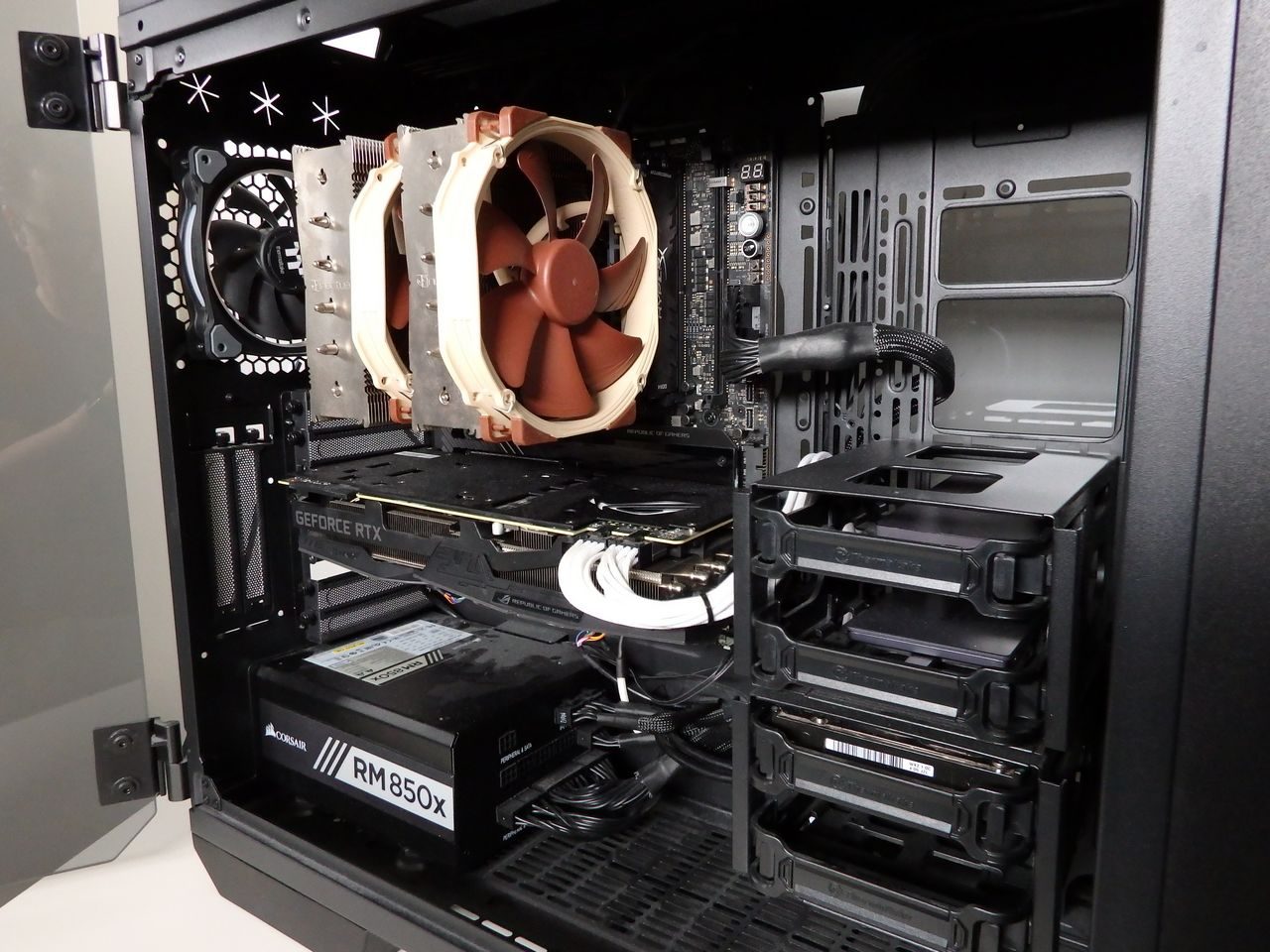
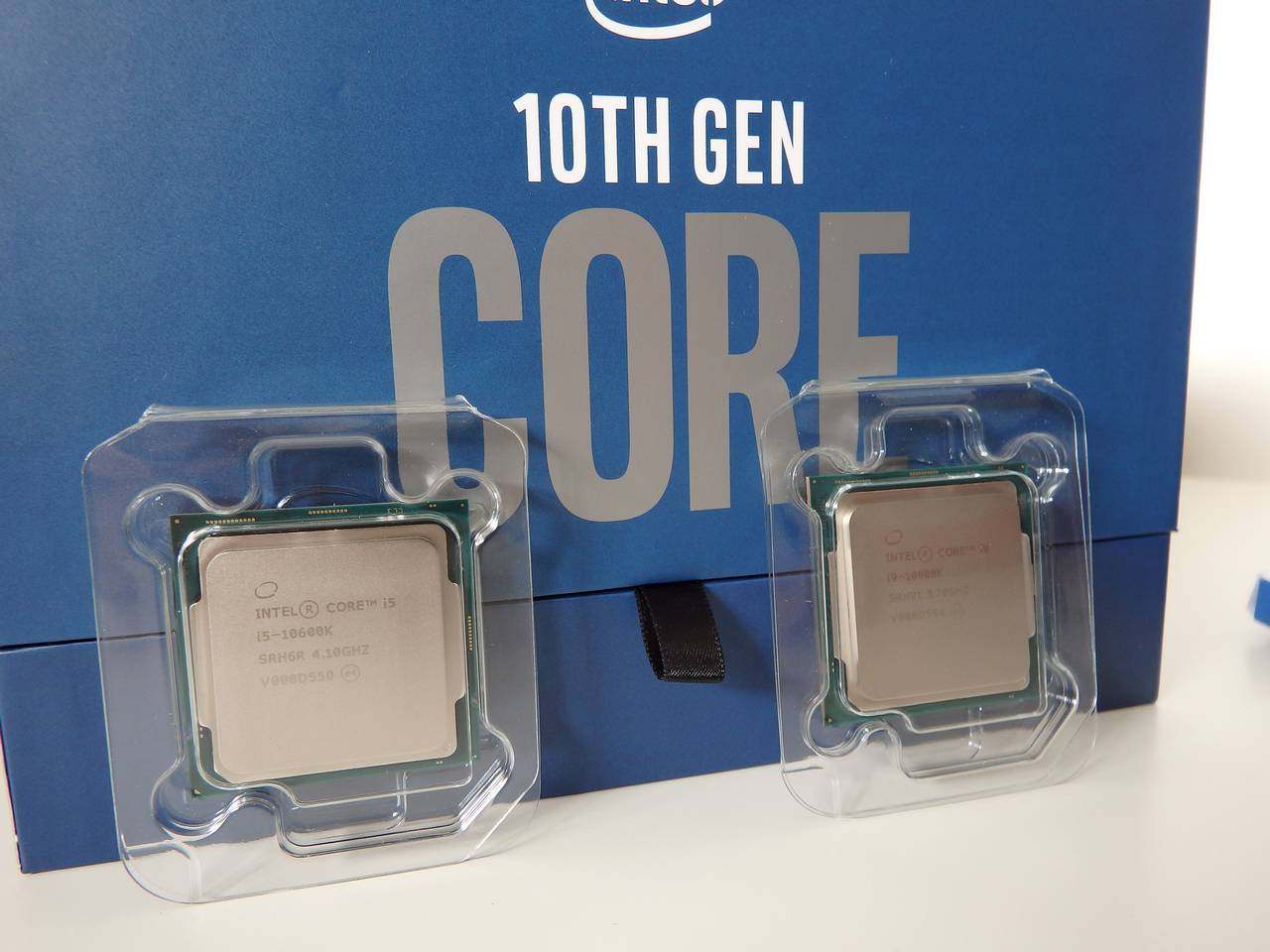
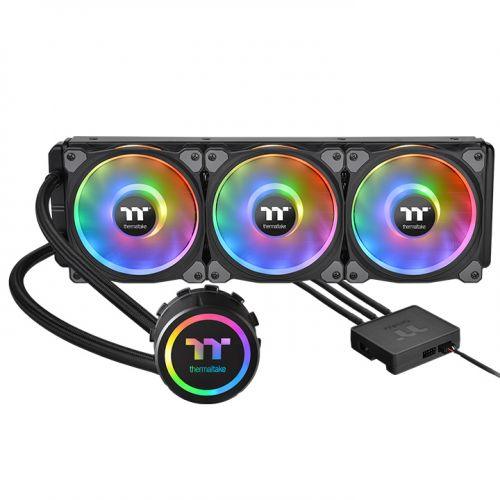
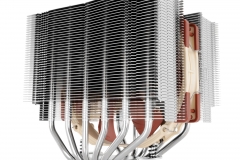
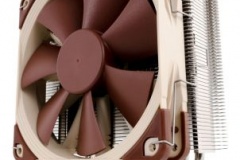
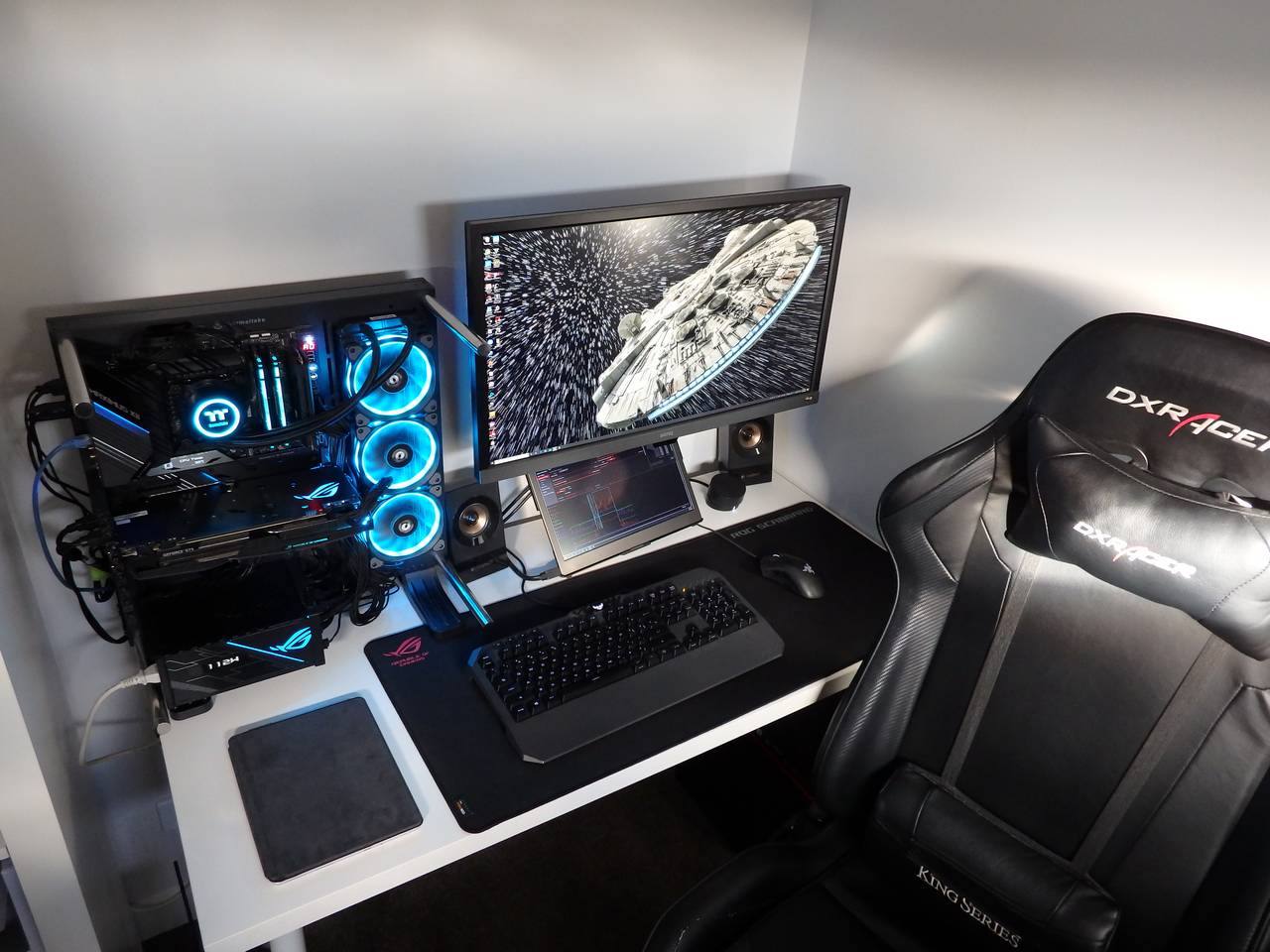
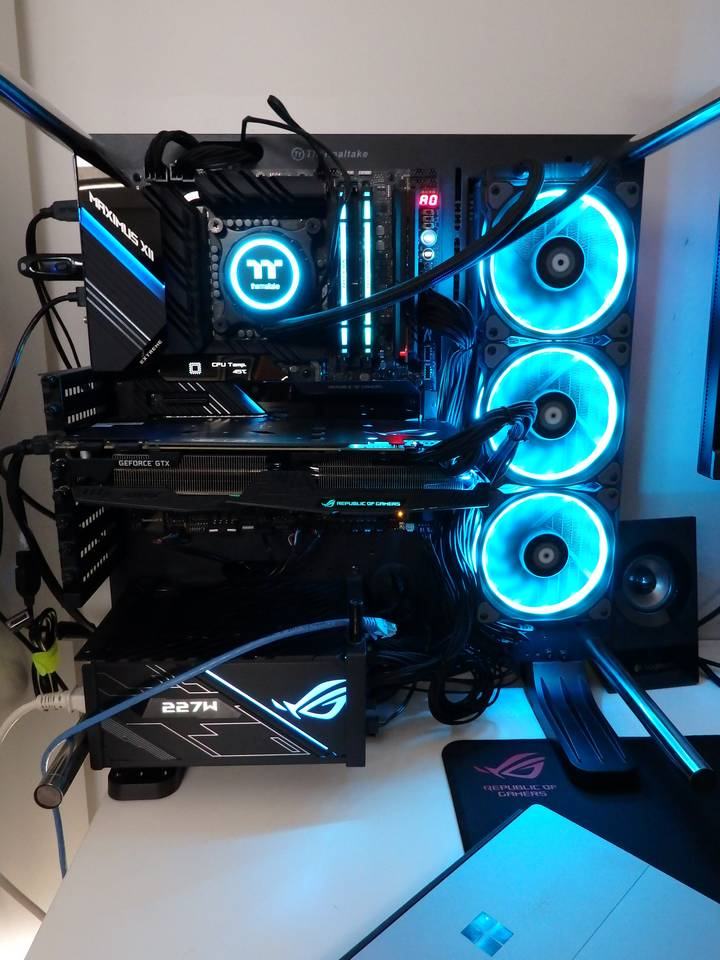
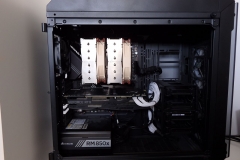
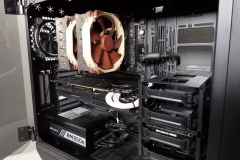
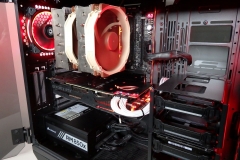
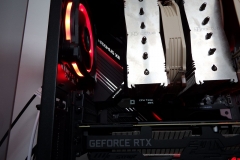





Good reading that was.
I’m just buying one of these processors this week.
I’m currently using a be quite dark rock 4 Pro on my i7 9800k.
I’m using the huge thermaltake case (same as you.
Three 120mm fans on the front.
I’ve chosen the gigabyte z490 aorus elite as my chosen motherboard.
Your review has help me a lot.
I’ll try with the dark rock 4 Pro, see how it goes.
I do like overclocking, so may have to go with a 360 aio in the near future.
very good read.. I currently overclock a i7-7700k to 5.1 in winter (Perth Western Australia) and 4.8 summer (All cores) on a noctua.. without drama.. thinking about upgrading to the 10900k and think I’ll test with the air blower option I have before I go down the slippery water cooler option
Should have noted.. the 7700k was de-lidded and liquid metal’d.. which made a huge difference on that hot little chip.. under load rocking about 80c in prime tests.. generally it’s way cooler..
Do people delid tenth gen Intel’s?